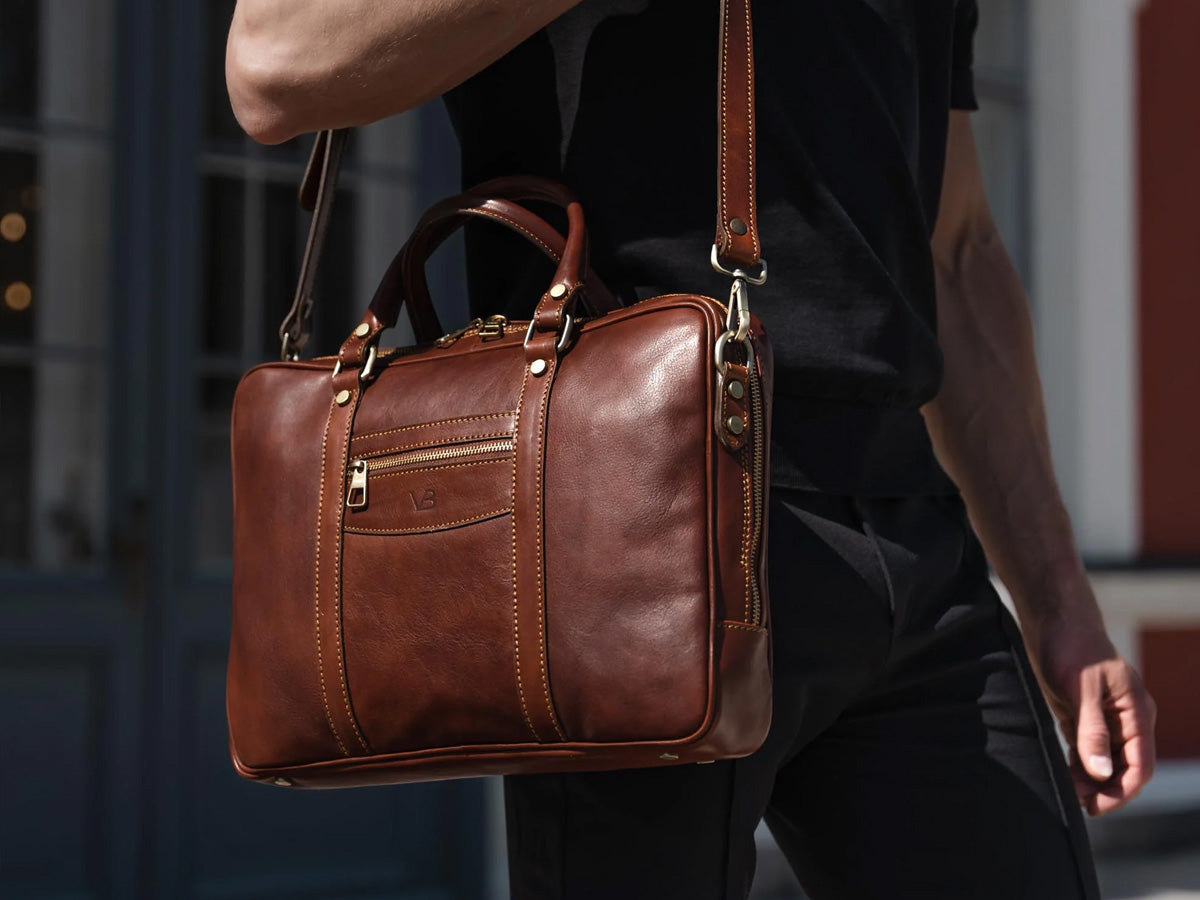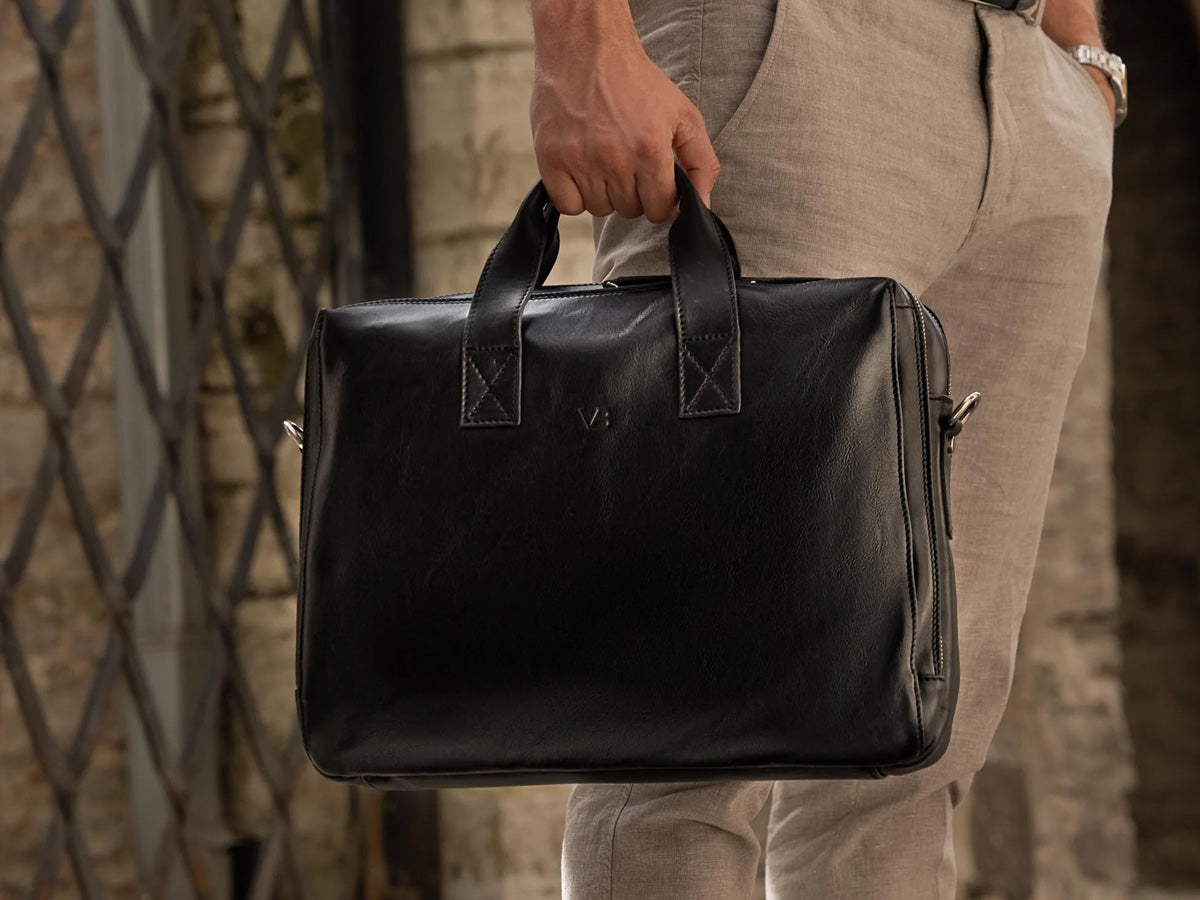How to tell if leather is real

There is nothing quite like a real leather bag or sofa to add a touch of luxury to your life.
But if you think you’re getting real leather, only to realize later that it was fake, you’ll be very disappointed.
In this post, we go over our best tips to ensure you always get authentic leather when you want it.
How To Identify Real vs Fake Leather
In addition to the detailed guide below, we also have this useful summary video on how to choose a leather product:
Read the Label
One of the easiest ways to determine if a piece of leather is genuine is to read the label.
If you see the words synthetic, polyester, leatherette, or vegan leather, you can be confident that the product is not genuine animal leather but rather a manufactured alternative.
All Von Baer bags have a certificate of leather origin, with the trademark Pelle Conciata al Vegetale in Toscana or Cuoio Superiore to show it's an authentic product made from Tuscan (Italian) Vegetable-Tanned Leather.
Feel the Fabric
If you are familiar with leather products such as jackets, bags, and sofas, you can tell if a piece of leather is real or fake by performing a touch test.
Genuine leather is typically soft, slightly stretchy, and has a grainy feel.
Hold a piece in your hand, it will warm with your body heat, and real leather is always flexible.
Faux leather feels cold, plastic-like, and it will not stretch. So, feel the fabric to identify a fake.
Carry Out a Smell Test
Genuine leather has a distinct smell, often described as earthy, woodsy, oaky, or simply ‘leathery’, whereas faux leather does not.
Cheap fake leather can smell of plastic or chemicals, although high-end vegan leathers typically have no smell at all.
Check the Grain
Authentic leather, made from animal hide, is a natural material with inconsistent surface grains or pores.
Faux leather fabrics typically have no grains, and while some manufacturers have mastered the art of applying a grained surface, it is too ‘perfect’ to be the real thing.
Perform a Flame Test
While not recommended for testing brand-new goods, a flame test will help you identify if the leather is genuine or fake.
If you intend to carry out this type of check, only do so in an inconspicuous area, such as the underside of a couch, as it may cause significant damage (especially if the piece is faux leather).
- Hold a flame against the fabric for 5-10 seconds.
- If it catches flame or releases a chemical smell, it is fake leather.
- If it only chars and smells similar to burnt hair, it is the real thing.
City Real Leather Laptop Bag from Von Baer
Still unsure? Here are some other ways to differentiate between genuine and faux leather:
Genuine leather and faux leather have different edges.
As imitation leather is machine-made, it has perfectly smooth edges and a clean-cut finish.
Real leather, on the other hand, has rough, uneven edges, and no two pieces of material are the same.
While you will not see edges on leather sofas, you can usually spot this telltale sign on fake leather handbags.
Faux leather is more rigid than genuine leather
Bend a piece of real animal leather, and it will curve easily, wrinkle naturally and change color slightly.
It has a unique elasticity you will not find in fake leather, which is stiff and difficult to bend.
Authentic leather absorbs moisture. Fake leather does not
Carry out a water test, and you will find out almost immediately if your leather is genuine.
Add a few drops onto the fabric. If it pools on top, it's fake.
Real leather will absorb it in just a few seconds.
Essential - Real Leather Briefcase from Von Baer
Real leather goods cost more than faux leather products
A 100% genuine leather sofa, jacket or handbag will cost considerably more than a synthetic alternative, so check the price tag, and if it seems too good to be true, it probably is.
If you want to purchase an expensive leather item, shop around and compare prices.
Genuine leather goods made from the same type of leather will carry a similar price at most retailers.
But you need to know your leathers.
Top-grain leather bags cost more than regular cowhide bags, and there are other fabrics, such as nubuck, patent leather, Nappa leather and calfskin leather, to consider.
However, if you purchase a designer handbag from a leading luxury brand such as Stella McCartney, you may pay more for a vegan leather bag than a genuine one, so bear this in mind.
Don’t be swayed by color
Synthetic and natural leathers dye equally well, so don’t let color influence your decision.
Leather bags and sofas in bright primary colors often look fake, but they could be made from the real thing, so rely on feel, texture, smell, and pricing to make your decision.
Related leather articles:
- Leather
- Faux leather
- Vegan leather
- Bonded leather
- Genuine leather
- Pleather
- Top grain leather
- Vegetable tanned leather
- What is artificial leather?
- What is full grain leather
- Mushroom leather
- Napa leather
- Pebbled leather
A Guide to Different Types of Real Leather

Genuine leather is a wonderfully versatile fabric for creating luxury goods, but it comes in many different types, and if you cannot differentiate between them, you may end up paying more than you should.
In this guide to real leather, we’ll explain the differences, but first, we’ll list the four main categories:
- Full-Grain Leather
- Top-Grain Leather
- Genuine Leather
- Reconstituted (Bonded) Leather
Full-grain leather is the champion of all leathers and reserved for high-end products. It has a luxurious, smooth finish, very few flaws, and it develops a beautiful patina as it ages (see our video on leather patina here).
Top-grain leather comes in just behind full-grain leather in terms of quality, but it is still suitable for high-end products.
It may be slightly thinner due to its sanded surface and topcoat, but it is highly stain-resistant, making it a popular choice for furniture upholstery, luggage, and backpacks.
Genuine leather is one of the lowest qualities of authentic leather available, but that doesn’t mean it is a poor investment.
Genuine leather goods are typically made from the leftovers of high-end leather products, and as such, they might not last as long, but they have the advantage of being considerably cheaper.
Reconstituted leather, or bonded leather, is the cheapest real leather available.
Manufacturers typically glue multiple layers of low-quality leather together to create this fabric, and as a result, items made from reconstituted leather rarely last.
Browse related guides:
- Leather grades
- How is leather made
- Where does leather come from
- Leather tanning
- Leather guide for beginners
- Bonded vs Real vs Faux leather
- What is leather patina
Conclusion
We hope you enjoyed our article on how to tell if leather is real.
If you have any questions or comments, contact us at info@vonbaer.com, or leave them in the comments.
Want to read more? Check out our Leather pages here.
Related articles:

Author: Albert Varkki
Albert Varkki is the co-founder of Von Baer. He understands leather products as a consumer, supplier, and a manufacturer, helping you with the inside knowledge you need, to choose the perfect leather product for you.
We strive for the highest editorial standards, and to only publish accurate information on our website.
Related Articles

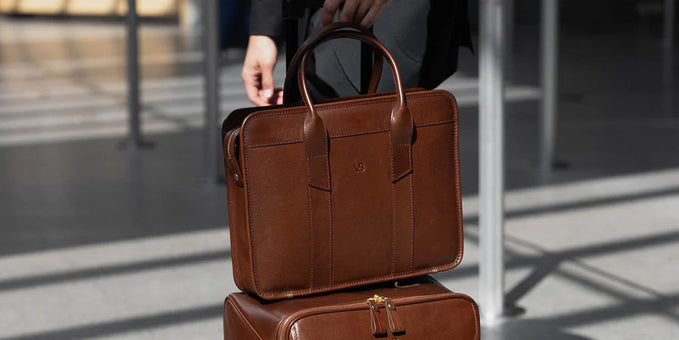
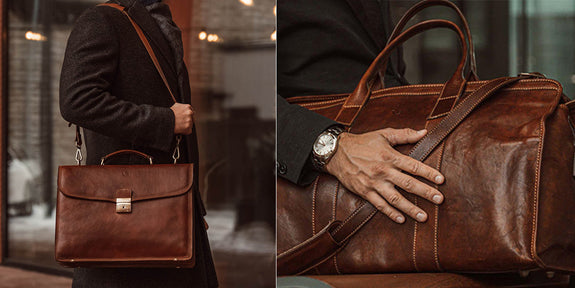
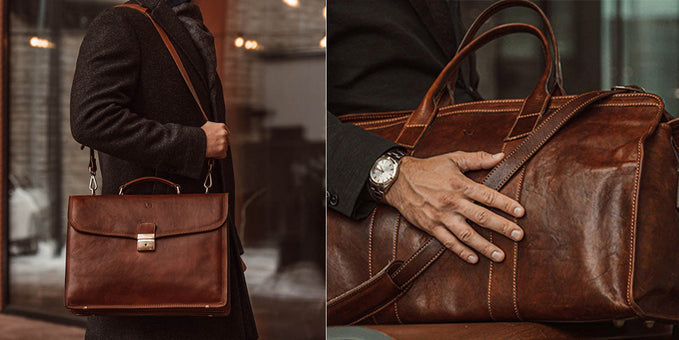
Timeless Leather Bags for Men That Command Authority in 2025
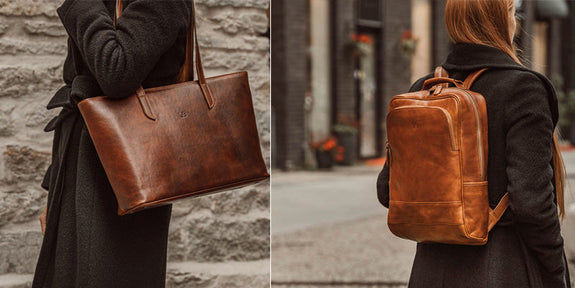
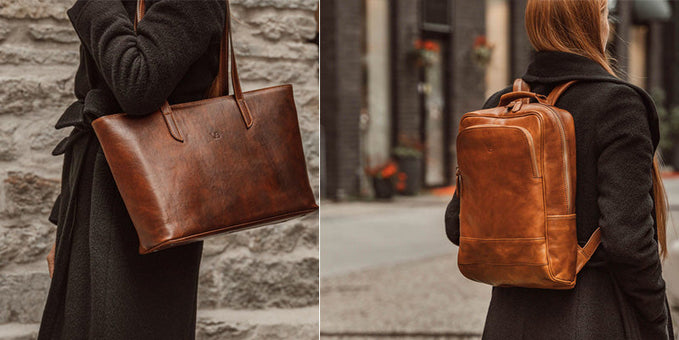
Leave a Comment
Your email address will not be published.


